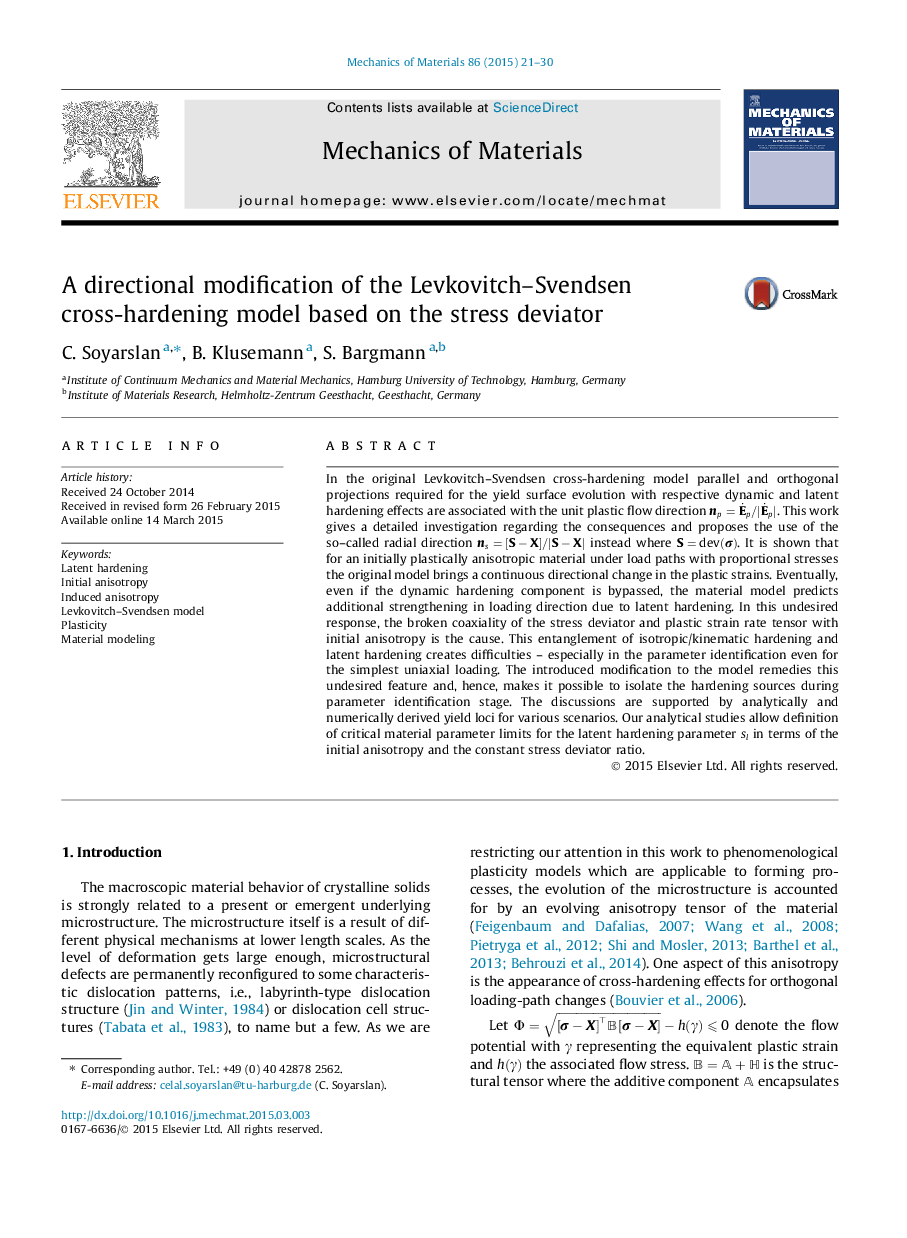| کد مقاله | کد نشریه | سال انتشار | مقاله انگلیسی | نسخه تمام متن |
|---|---|---|---|---|
| 799597 | 1467454 | 2015 | 10 صفحه PDF | دانلود رایگان |
• Cross hardening structural tensor evolution is formulated in the radial direction.
• This remedies the hardening entanglement in radial loading paths.
• Invariance of Lankford’s coefficients in radial loading paths is also satisfied.
• Parameter bounds against loss of yield locus ellipticity are studied.
• Analytical and numerical comparisons among model variants are given.
In the original Levkovitch–Svendsen cross-hardening model parallel and orthogonal projections required for the yield surface evolution with respective dynamic and latent hardening effects are associated with the unit plastic flow direction np=Ėp/|Ėp|. This work gives a detailed investigation regarding the consequences and proposes the use of the so–called radial direction ns=[S-X]/|S-X|ns=[S-X]/|S-X| instead where S=dev(σ)S=dev(σ). It is shown that for an initially plastically anisotropic material under load paths with proportional stresses the original model brings a continuous directional change in the plastic strains. Eventually, even if the dynamic hardening component is bypassed, the material model predicts additional strengthening in loading direction due to latent hardening. In this undesired response, the broken coaxiality of the stress deviator and plastic strain rate tensor with initial anisotropy is the cause. This entanglement of isotropic/kinematic hardening and latent hardening creates difficulties – especially in the parameter identification even for the simplest uniaxial loading. The introduced modification to the model remedies this undesired feature and, hence, makes it possible to isolate the hardening sources during parameter identification stage. The discussions are supported by analytically and numerically derived yield loci for various scenarios. Our analytical studies allow definition of critical material parameter limits for the latent hardening parameter slsl in terms of the initial anisotropy and the constant stress deviator ratio.
Journal: Mechanics of Materials - Volume 86, July 2015, Pages 21–30
